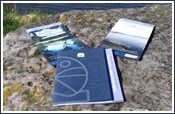As had been envisaged, the main use of the Canal was the carriage of sea sand from Bude to the interior. Other goods – coal, timber, iron, bricks – were also imported to Bude and brought inland by the Canal, while farm produce was exported. The Canal was much welcomed locally and when, for example, the first boats arrived at Holsworthy in 1823 there were great celebrations in and around the town.
While the lowest section – Bude to Helebridge – was designed to be used by barges, most of the system was designed for use by tub boats. On the lowest section the barges were raised and lowered by locks, but on the inland branches the tub boats were winched up and down the hills using a system of “inclined planes”. To this end, the boats were fitted with wheels, which engaged with rails on arrival at the top or bottom of the inclined plane, which was effectively a steep, smooth slope with rails running up and down the slope and a winch or drum with a cable at the top. The tub boats were raised and lowered either by the weight of water in enormous buckets lowered into great well pits or by giant water wheels built underground.
Although never a great commercial success, the Canal proved to be a boon to the remote inland communities in an era of poor transport facilities in the rural areas.
However, the railway reached Bude in 1898, immediately having a dire effect on the Canal’s trade. Ironically, the Canal had enjoyed a brief period of prosperity carrying the materials for the building of the railway.






